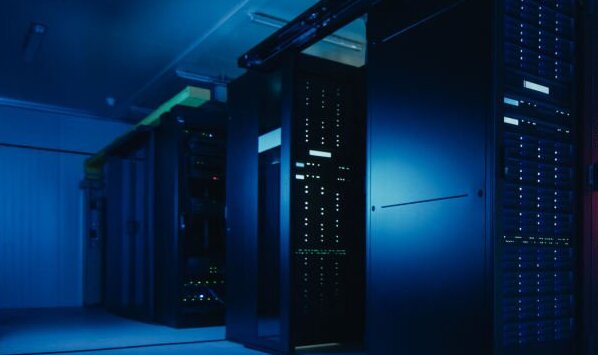How many Supercomputers India have? : Supercomputers are extremely strong devices that have the capacity to process complicated computations quickly. Applications in science and engineering include drug development, artificial intelligence, climate modelling, weather forecasting, and more. Since it was unable to acquire supercomputers from overseas in the 1980s, India has been building its own for a considerable amount of time. We will discuss some of the successes and difficulties of supercomputing in India in this blog article, as well as future prospects for this fascinating sector.
India has 11 supercomputers in the ranking of the most recent TOP500 list of the fastest supercomputers in the world, which was published in November 2023. With a peak speed of 5.4 petaFLOPS (quadrillion floating-point operations per second), AIRAWAT, ranked 75th, is the quickest. AIRAWAT is utilised for numerous research and development projects in fields including computational biology, astrophysics, climate science, and more. It is situated at the Centre for Development of Advanced Computing (C-DAC) in Pune.
In India, PARAM Siddhi-AI, ranked 81st with a peak performance of 5.2 petaFLOPS, is one of the other noteworthy supercomputers. C-DAC also develops PARAM Siddhi-AI, a platform devoted to machine learning and artificial intelligence applications. Pratyush is another, coming in at 139th place with a peak performance of 3.9 petaFLOPS. Pratyush is a meteorological and climate modelling tool housed at the Indian Institute of Tropical Meteorology (IITM) in Pune.
Where are the supercomputers located in India?
The supercomputers in India are distributed across various academic and research institutions, as well as government agencies. Some of the prominent ones are:
C-DAC: The Centre for Development of Advanced Computing is India’s top supercomputer development and deployment organisation. It operates out of multiple locations around the nation, including Bengaluru, Hyderabad, Pune, Noida, Thiruvananthapuram, etc. Since 1991, C-DAC has created the PARAM line of supercomputers, which have also been exported to a number of other nations.
IITM: A national hub for atmospheric science and weather forecasting research is the Indian Institute of Tropical Meteorology. Two supercomputers, Pratyush and Mihir, are housed there. Mihir is utilised for atmospheric modelling research and development, while Pratyush is used for operational weather forecasting and climate research.
IISC: One of India’s top institutes for scientific and technical research is the Indian Institute of Science (IISc). Two supercomputers, SahasraT and SERC, are housed there. With a high performance of 1.4 petaFLOPS, the Cray XC40 system SahasraT and the IBM Power9 system SERC have different top performances of 1.2 petaFLOPS. Both are utilised for different kinds of research initiatives in fields including quantum chemistry, molecular dynamics, and computational fluid dynamics, among others.
ISRO: India’s national space organisation is called ISRO, or the Indian Space Research Organisation. Two supercomputers, Vikram and SAGA, are housed there. Vikram is a Dell EMC system with a peak performance of 0.8 petaFLOPS, while SAGA is a Hewlett Packard Enterprise system with a peak performance of 1.2 petaFLOPS. Both are employed in space-related applications, including mission planning, satellite data processing, and remote sensing analysis.
NCMRWF:Under the Ministry of Earth Sciences, the National Centre for Medium Range Weather Forecasting (NCMRWF) is an independent institution. The supercomputer Aditya is housed there. Aditya is an IBM iDataPlex system with a 0.7 petaFLOPS maximum performance. Climate prediction and operational medium-range weather forecasting are two uses for it.
What are the future plans for supercomputing in India?
India has big plans to increase its capacity for supercomputing soon. Launched by the Indian government in 2015, the National Supercomputing Mission (NSM) is one of the primary efforts. By 2022, the NSM wants to bring in 73 domestic supercomputers with a combined 45 petaFLOPS of processing capacity. Along with developing exaFLOPS (quintillion floating-point operations per second) and zettaFLOPS (sextillion floating-point operations per second) supercomputers, the NSM also hopes to construct the next generation of supercomputers.
The development of indigenous microprocessors and supercomputing hardware is another crucial objective for India. At the moment, the majority of supercomputers in India are built using imported interconnects, memory, processors, and other parts. Because of this, they are reliant on foreign suppliers and open to cyberattacks and penalties. India is developing Shakti and Vega, two of its own indigenous microprocessors, in an effort to overcome this obstacle. Vega is a series of 64-bit x86 CPUs, whereas Shakti is a family of 32- and 64-bit RISC-V processors. Both are anticipated to power India’s upcoming supercomputers and are created and produced there.
What are the needs of supercomputer in India?
The advancement of India’s scientific and technical frontiers depends on supercomputers. They make it possible for academics to tackle challenging issues that call for enormous volumes of data and computation. India needs supercomputers in a number of fields, including:
Weather and climate: Numerical models simulating the atmospheric and oceanic processes influencing weather and climate are run on supercomputers. These models aid in understanding the effects of climate fluctuation and change, as well as in giving precise and timely forecasts. The development of early warning systems for natural disasters like cyclones, floods, droughts, etc. is aided by supercomputers as well.
Healthcare and biotechnology: The design of novel medications and vaccines, as well as the analysis of massive genomic and proteomic data, are all done on supercomputers. Supercomputers are also useful for simulating the spread and transmission of infectious diseases, like Covid-19, and for creating containment plans that work.
Defence and security: Advanced weapons systems, such missiles, rockets, satellites, etc., are designed and tested using supercomputers. Supercomputers also aid in the development of AI and machine learning applications for the defence industry, as well as strengthening the nation’s cybersecurity and surveillance capacities.
Education and skill development: Virtual learning environments and interactive simulations that improve the calibre of education and skill development are made possible by supercomputers. Supercomputers are also used in the development of internet portals and platforms that give researchers and students nationwide access to high-performance computing resources.
Conclusion:
Since its beginnings in the 1980s, supercomputing in India has advanced significantly. India has created its own in-house supercomputers that have won praise and recognition throughout the world. India has established audacious objectives to augment its supercomputing proficiencies in the forthcoming times. Supercomputers are essential to India’s progress in science and technology as well as to raising the standard of living for its people.




